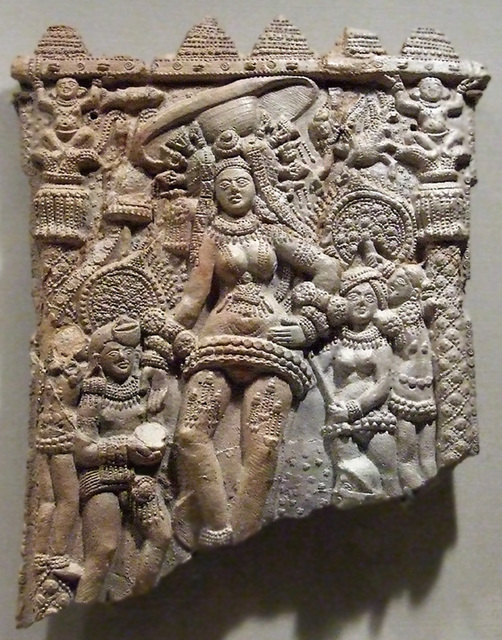Plaque with a Dancer and a Vina Player in the Metr…
Auspicious Emblem: Loving Couple in the Metropolit…
A Victorian House in Los Angeles, July 2008
A Victorian House in Los Angeles, July 2008
A Victorian House in Los Angeles, July 2008
A Victorian House in Los Angeles, July 2008
Detail of a Turret of a Victorian House in Los Ang…
A Victorian House in Los Angeles, July 2008
A Victorian House in Los Angeles, July 2008
A Victorian House in Los Angeles, July 2008
A Victorian House in Los Angeles, July 2008
Japanese Women Cloaked in American and Japanese Fl…
Statue of Roy Chanting the Solar Hymn Written on h…
Statue of Roy Chanting the Solar Hymn Written on h…
Statue of Roy Chanting the Solar Hymn Written on h…
Mask of a Fish in the Metropolitan Museum of Art,…
Male Equestrian Figure in the Metropolitan Museum…
Mende Helmet Mask in the Metropolitan Museum of Ar…
Mask: Chameleon in the Metropolitan Museum of Art,…
Adam and Eve by Albrecht Durer in the Metropolitan…
Graziella by Jules-Joseph Lefebvre in the Metropol…
Detail of Graziella by Jules-Joseph Lefebvre in th…
Detail of Graziella by Jules-Joseph Lefebvre in th…
Plaque with a Standing Yakshi in the Metropolitan…
Plaque with a Winged Goddess and Two Attendants in…
Plaque with an Erotic Scene in the Metropolitan Mu…
Bust of Bodhisattva Shakyamuni in the Metropolitan…
Inscribed Reliquary in the Metropolitan Museum of…
Roundel with a Winged Deity in the Metropolitan Mu…
Roundel with the Goddess Hariti in the Metropolita…
Emblema with Aphrodite and Eros in the Metropolita…
Yakshi Holding a Crowned Child with a Visiting Par…
Head of the Emperor Augustus in the Getty Villa, J…
Head of the Emperor Augustus in the Getty Villa, J…
Head of the Emperor Augustus in the Getty Villa, J…
House with a Pirate Flag in Los Angeles, July 2008
Detail of a Victorian House in Los Angeles, July 2…
A Victorian House in Los Angeles, July 2008
A Victorian House in Los Angeles, July 2008
A Victorian House in Los Angeles, July 2008
Lamppost in the Neighborhood with the Historic Vic…
Bronze Plaque Commemorating the Victorian Houses i…
A Victorian House in Los Angeles, July 2008
Detail of a Victorian House in Los Angeles, July 2…
A Victorian House in Los Angeles, July 2008
Location
See also...
Keywords
Authorizations, license
-
Visible by: Everyone -
All rights reserved
-
1 211 visits
Plaque with the Goddess Durga and Attendants in the Metropolitan Museum of Art, January 2009


Plaque with the goddess Durga and attendants, Shunga period (ca. 2nd–1st century b.c.), 1st century b.c.
Chandraketugarh, West Bengal, India
Terracotta
10 1/2 x 7 7/8 in. (26.7 x 20 cm)
Purchase, Florence and Herbert Irving Gift, 1990 (1990.281)
This plaque is one of the largest and most important early Indian molded terracottas known. The identity of the main figure, the principal subject of a number of such early Indian plaques, is uncertain. She may be an early depiction of the goddess Durga, who was not thought to be represented prior to the third century. After this date Durga is usually shown, in a narrative format, as the slayer of the buffalo demon Mahisha, her multiple hands holding a bevy of weapons. Here, she displays a more pacific mien, her arsenal stuck into her coiffure like hairpins. The Museum's plaque shows the goddess with female attendants and male(?) supplicants within a shrine(?). Two columns with lotus capitals bearing atlantid figures, most probably yakshas (male deities associated with the earth's bounty), support the roof. Durga stands with left hand on hip, right hand in a boon-bestowing gesture pointing to a bowl held by a supplicant. Aside from her militant aspect, Durga is also associated with prosperity and in later plaques, coins fall from her hand. Female attendants shield her with a parasol, hold fans of peacock feathers(?), and support a large standard(?). The head of a kneeling supplicant is seen at the right. The function of these plaques is unknown. They may have been offerings or icons for personal devotion.
Text from: www.metmuseum.org/toah/ho/04/ssa/ho_1990.281.htm
Chandraketugarh, West Bengal, India
Terracotta
10 1/2 x 7 7/8 in. (26.7 x 20 cm)
Purchase, Florence and Herbert Irving Gift, 1990 (1990.281)
This plaque is one of the largest and most important early Indian molded terracottas known. The identity of the main figure, the principal subject of a number of such early Indian plaques, is uncertain. She may be an early depiction of the goddess Durga, who was not thought to be represented prior to the third century. After this date Durga is usually shown, in a narrative format, as the slayer of the buffalo demon Mahisha, her multiple hands holding a bevy of weapons. Here, she displays a more pacific mien, her arsenal stuck into her coiffure like hairpins. The Museum's plaque shows the goddess with female attendants and male(?) supplicants within a shrine(?). Two columns with lotus capitals bearing atlantid figures, most probably yakshas (male deities associated with the earth's bounty), support the roof. Durga stands with left hand on hip, right hand in a boon-bestowing gesture pointing to a bowl held by a supplicant. Aside from her militant aspect, Durga is also associated with prosperity and in later plaques, coins fall from her hand. Female attendants shield her with a parasol, hold fans of peacock feathers(?), and support a large standard(?). The head of a kneeling supplicant is seen at the right. The function of these plaques is unknown. They may have been offerings or icons for personal devotion.
Text from: www.metmuseum.org/toah/ho/04/ssa/ho_1990.281.htm
- Keyboard shortcuts:
Jump to top
RSS feed- Latest comments - Subscribe to the comment feeds of this photo
- ipernity © 2007-2024
- Help & Contact
|
Club news
|
About ipernity
|
History |
ipernity Club & Prices |
Guide of good conduct
Donate | Group guidelines | Privacy policy | Terms of use | Statutes | In memoria -
Facebook
Twitter

Sign-in to write a comment.